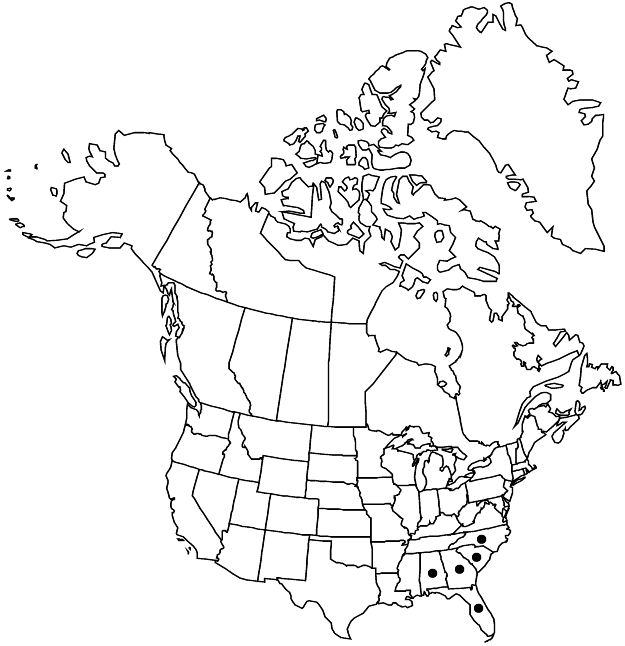Hypericum tenuifolium
Fl. Amer. Sept. 2: 377. 1813.
Shrubs, usually decumbent, not rooting, forming mats, 1–5 dm. Stems: internodes 6-lined at first, becoming 4-lined, then terete. Leaf-blades linear-subulate, 4–11 × 0.4–0.8 mm, base articulated, persistent, parallel or slightly expanded, margins revolute, apex rounded with ± prominent hydathode to long-acuminate, midrib unbranched. Inflorescences ± narrowly cylindric, 1–7-flowered, with 1 (–3) -flowered dichasia from to 4 proximal nodes, rarely with 1 pair of flowering branches; flowers sessile or nearly so. Flowers 10–14 mm diam.; sepals deciduous, not enclosing capsule, 5, linear-subulate, unequal, 2–4 × 0.4–0.5 mm; petals 5, bright-yellow, oblanceolate-oblong to obovate, 5–10 mm; stamens deciduous, 50–90; ovary 3-merous. Capsules narrowly (sub-) cylindric, (4–) 5.7–9.5 × 1.5–2 mm. Seeds scarcely carinate, 0.5 mm; testa coarsely reticulate. 2n = 18.
Phenology: Flowering spring–mid summer (Apr–Jul).
Habitat: Dry, sandy woods, dunes and dune hollows, coastal plain
Elevation: 0–200 m
Distribution

Ala., Fla., Ga., N.C., S.C.
Discussion
Hypericum tenuifolium differs from H. galioides in habit, leaf size, and inflorescence, and in its drier habitat. Its nonrooting stems, longer leaves, and (usually) longer stems distinguish it from H. lloydii.
Selected References
None.